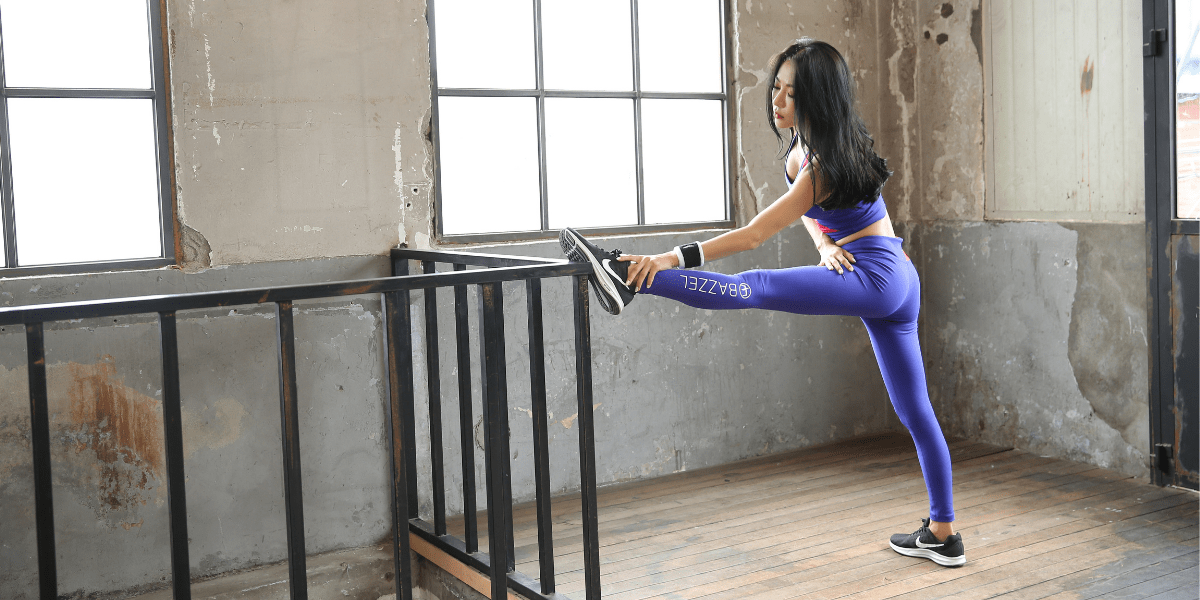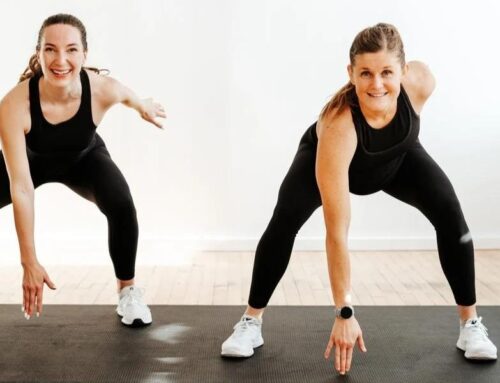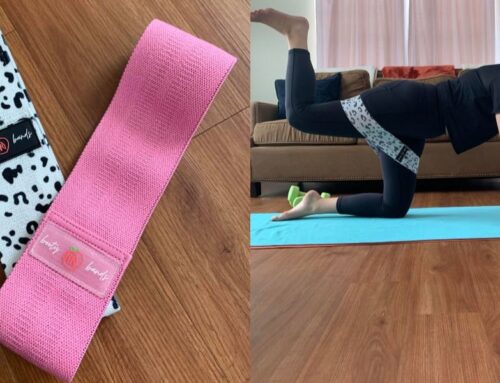
The glutes are one of the largest muscle groups in the body and are responsible for supporting the hips and lower back. Tightness in the glutes can cause discomfort and even lead to injury, especially for those who sit for long periods of time or engage in activities that involve repetitive movements. Incorporating regular glute stretches into your fitness routine can help alleviate tightness, improve mobility, and reduce the risk of injury.
In this article, we will share the 7 best stretches for your glutes. These stretches target the glutes from various angles and can be performed easily at home or at the gym. Whether you are a beginner or an experienced athlete, these stretches can help you maintain healthy and flexible glutes.
So, let’s dive in and explore the best glute stretches to add to your workout routine.
Why do your glutes feel tight?
There are several reasons why your glutes may feel tight. The most common reason why you feel tightness in your glutes is due to sitting for long periods of time, which can cause the muscles to become tight and stiff. Another reason may be due to overuse or repetitive movements, such as running, cycling, or weightlifting.
Muscle imbalances or weakness in surrounding areas like your hips and lower back can also contribute to tightness in your glutes. In some cases, tightness in the glutes may be a symptom of an underlying condition like sciatica or piriformis syndrome.
Regardless of the cause, tight glutes can lead to discomfort, pain, and limited mobility. Incorporating regular stretching and strengthening exercises into your routine can help alleviate tightness and prevent it from reoccurring. It’s also important to listen to your body and avoid overuse or repetitive movements that can exacerbate tightness and lead to injury.
Benefits of Stretching Your Glutes
Stretching your glutes offers a range of benefits that go beyond simply relieving tightness and discomfort in the buttocks. Here are some key benefits of incorporating glute stretches into your fitness routine:
- Improved flexibility: Stretching your glutes can help improve your overall flexibility and range of motion. This can be particularly beneficial for athletes and fitness enthusiasts who need to maintain optimal mobility and agility.
- Reduced risk of injury: Tight glutes can contribute to a range of injuries, including lower back pain, hip pain, and knee pain. Regular glute stretches can help alleviate tension and reduce the risk of these types of injuries.
- Improved posture: Strong and flexible glutes play an important role in maintaining good posture. Stretching your glutes can help you maintain optimal alignment and reduce the risk of developing posture-related issues like kyphosis or lordosis.
- Reduced pain and discomfort: Tight glutes can cause pain and discomfort, particularly in the lower back and hips. Stretching these muscles can help alleviate these symptoms and improve overall comfort.
- Enhanced athletic performance: Flexible and strong glutes are essential for many athletic movements, including running, jumping, and lifting. Incorporating glute stretches into your fitness routine can help you perform these movements more effectively and with less risk of injury.
When should you stretch your glutes?
Stretching your glutes can be done at any time of the day, but it’s important to listen to your body and stretch when it feels most beneficial. For example, stretching your glutes in the morning can help wake up your muscles and prepare your body for the day ahead, while stretching before or after exercise can help prevent injury and improve performance.
If you have a sedentary job or spend a lot of time sitting, it’s also a good idea to incorporate glute stretches throughout the day to alleviate tension and prevent tightness from developing. Stretching before bed can also be helpful for promoting relaxation and improving sleep.
Ultimately, the best time to stretch your glutes is when it feels right for your body. It’s important to listen to your body and not push yourself beyond your limits, as overstretching can lead to injury. Incorporating regular stretching into your routine can help maintain healthy and flexible glutes, and improve overall mobility and range of motion.
What are the best Glute stretches?
If you’re looking to relieve tension in your glutes and surrounding areas, incorporating regular stretching into your routine can be incredibly helpful. Here are 7 stretches that can help alleviate tightness in your glutes, as well as surrounding areas like your back, legs, hips, and pelvis.

1. Seated figure-four stretch
The seated figure-four stretch is a simple and effective stretch that targets the glutes, hips, and lower back. It can be done almost anywhere and is easy to modify for individuals with different flexibility levels.
To perform the seated figure-four stretch:
- Sit upright in a sturdy chair. Place your right ankle on your left thigh, just above your knee. Place your hands on your shins.
- Keeping your spine straight, lean slightly forward to deepen the stretch.
- Hold for 20–30 seconds.
- Return to the starting position. Repeat with the other leg.
In addition to doing chair stretches you can stretch your glutes while sitting on the floor or while standing.
2. Seated glute stretch
The seated glute stretch is a great way to target the glutes and hips, and can be done almost anywhere, making it a convenient stretch to incorporate into your daily routine.
To perform the seated glute stretch:
- Sit on the floor and extend your legs in front of you.
- Keeping your back straight, lift your left leg and place your left ankle on your right knee. Lean slightly forward to deepen the stretch.
- Hold for 20 seconds, then repeat on the other side.
3. Downward-Facing Dog
Downward-Facing Dog is a popular yoga pose that is great for stretching the entire body, including the glutes, hamstrings, and lower back.
To perform Downward-Facing Dog:
- Start in a pushup position, with hands shoulder-width apart and legs together. Straighten your body and engage your core.
- Move your hips back and up, forming an upside-down “V” with your body. Slightly bend your knees and place your head between your shoulders, keeping it in line with your spine. Reach your heels toward the floor but keep them slightly raised.
- Hold for 20 seconds. Return to the starting position.
Note: For extra wrist support, you can place each hand on a yoga block. Bend your knees if you need to. This may help straighten your back, ensuring that your body stays in an upside-down “V” shape.
4. Pigeon Pose
The pigeon pose is a yoga pose that provides a deep stretch to the glutes, hips, and lower back. It can be modified for different levels of flexibility and is a great way to release tension and improve mobility in these areas.
To perform pigeon pose:
- Start on all fours. Move your right knee toward your right wrist, placing your shin on the floor. Move your right ankle toward your left wrist.
- Slide your left leg back, point your toes, and keep your hips facing forward. Extend your spine.
- Gently walk your hands forward. Hold for 5–10 breaths.
- Return to the starting position. Switch legs and repeat.
P.S. You can also challenge yourself by adding a quad stretch. Bend your back leg, point your foot upward, and hold your foot with your hand.
5. Knee to opposite shoulder
The knee to opposite shoulder stretch is a great way to stretch the glutes and lower back, as well as the hips and hip flexors.
To perform the knee to opposite shoulder stretch:
- Start on your back with your legs extended and your feet flexed upward.
- Bend and lift your right knee and place your hands around your knee.
- Pull your right knee up toward your left shoulder.
- Hold for 20–30 seconds. Return your right leg to the starting position.
- Straighten your right leg and repeat with your left leg.
6. Standing figure-four stretch
The standing figure-four stretch is a simple and effective stretch that targets the glutes, hips, and lower back. It can be done anywhere and is easy to modify for individuals with different flexibility levels.
To perform the standing figure-four stretch:
- Stand up straight. Cross your left ankle over your right thigh, just above your knee, to make a “4” shape. Hold on to a desk or wall for support.
- Slowly bend your right knee, moving your hips down into a squat position.
- Pause when you feel a stretch in your left glute. Hold for 20–30 seconds.
- Return to the starting position. Repeat with your other leg.
7. Seated twist
The seated twist is a great stretch to target the glutes, lower back, and hips. It can help improve mobility and flexibility in these areas, while also providing a gentle spinal twist.
To perform the seated twist:
- Sit on the floor and stretch your legs out in front of you.
- Place your left arm behind you and bring your left leg over your right, placing your left foot on the floor near your right knee.
- Position your right arm over your left knee, with your palm facing outward.
- Twist to the left and use your right arm to pull your left knee inward.
- Hold this position for 20–30 seconds.
- Untwist and repeat on the other side.
Final thoughts
Incorporating glute stretches into your daily routine can provide many benefits, including reducing tension and tightness in the glutes, hips, and lower back. The seven stretches mentioned in this article are simple to perform and can be done at home or in a gym setting.
Remember to stretch slowly and breathe deeply while performing these stretches, and never force your body beyond its limits. By adding these stretches to your fitness routine, you can improve your flexibility, reduce pain and discomfort, and ultimately improve your overall physical well-being.



